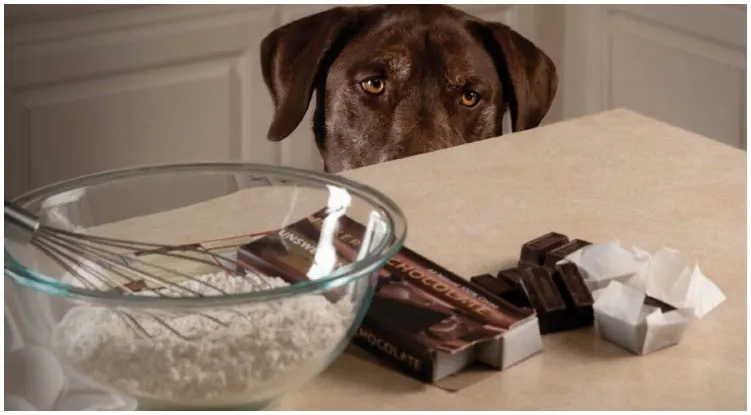If you were lucky enough to grow up around dogs you definitely already know by now that dogs and chocolate together are a big no-no. No matter how much your canine wants to take a bite of your chocolate bar — you giving in and sharing your favorite treat could have some serious effects on your dog’s health. But what will happen if you do? What happens if a dog eats chocolate? To find out — keep reading this article.
There is countless of food that is completely safe for humans to eat, but can be toxic for dogs. And chocolate definitely is one of them. Sometimes it can be confusing to differentiate between which food is good or bad for dogs. However, no matter how many times it’s repeated to not give any chocolate to your dogs, some dog owners still do it.
But what happens when they do? And what should you do if your dog accidentally eats some chocolate when you aren’t looking?
Let’s answer these questions together.
What happens if a dog eats chocolate?
While one small bite of chocolate won’t kill your dog, it certainly won’t be beneficial for his health either. One small bite of chocolate could not cause any symptoms at all, or it could cause some mild ones like stomach pain or discomfort.
However, if your dog consumes a dangerous amount of chocolate, waste no time and take your dog to the emergency. Call your vet before you attempt any home remedies. The toxicity of chocolate can result in life-threatening cardiac arrhythmia, seizures, tremors and more. The effects are visibly fairly quickly after the ingestion too (6-12 hours max) so that’s why you shouldn’t waste any time.
If you are in any way unsure about the amount of dog food — It’s always better to be safe than sorry, and contact your vet.
What is so toxic about chocolate?
There are two main substances that are toxic about chocolate: methylxanthines theobromine and caffeine. Theobromine is the more problematic one, as it’s concentration is 10 times higher. The amount of caffeine and theobromine varies naturally by cocoa beans, and by the production of the chocolate by brand.
The main toxin in chocolate — Theobromine, is actually fairly similar to caffeine. Both of them are used i medicine as a diuretic, blood vessel dilator, heart stimulant and a muscle relaxer.
However, the issue lies in the fact that dogs can’t metabolize theobromine and caffeine as easily as humans do. And thats why these two substances have such a strong effect on dogs.
Which amount of chocolate is poisonous to dogs?
This will depend on the type of chocolate your canine consumed. The darker the chocolate, the higher the concentration of theobromine — the more poisonous it is to your dog.
Baking chocolate and gourmet dark chocolate are highly concentrated and contain 130-450 mg of theobromine per ounce. Common milk chocolate only contains about 44-58 mg/ounce. White chocolate rarely poses any threat of chocolate poisoning with only 0.25 mg of theobromine per ounce of chocolate.
However, even if the amounts of chocolate your dog consumed aren’t toxic, it can still negatively affect him. Your dog can become ill from the fat and sugar that’s in the chocolate.
What are the signs of chocolate poisoning in dogs?
The symptoms of chocolate poisoning include: increased urination, increased thirst, diarrhea, vomiting, restlessness, hyperactivity, an irregular gait, tremors, or seizures.
Clinical signs of chocolate poisoning can take hours to develop and they can last for days. Theobromine remains in the bloodstream for a longer period and can even be re-absorbed from the bladder.
What is the treatment for chocolate poisoning in dogs?
The treatment of chocolate poisoning will depend of the type and amount of chocolate that your dog consumed.
If treated early, induced vomiting and administering activated charcoal will prevent the absorption of theobromine.

